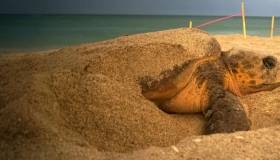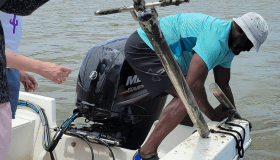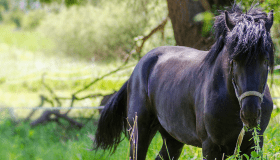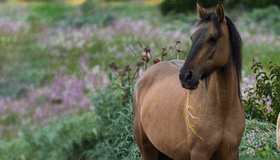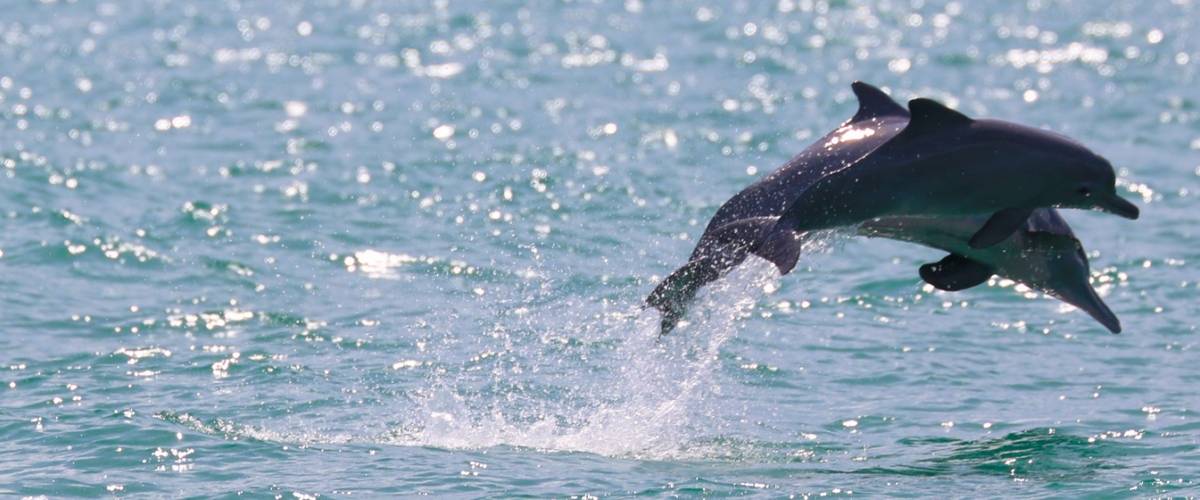
DENVER/October 19, 2021 – How much noise is too much for dolphins? Morris Animal Foundation-funded investigators at the MareCet Research Organization in Malaysia recently began a study to assess the impacts of underwater noise on the behavior and stress levels of two locally endangered dolphin species; the Indo-Pacific humpback dolphin and the Irrawaddy dolphin. What they learn may help advance conservation strategies to protect dolphins and other regional marine mammal species.
Dolphins rely immensely on sounds using whistles, squeaks and echolocation, such as clicks, to navigate, communicate and forage. The MareCet team suspects human activities, such as boat traffic from tourism, sea transportation and fishing, increase underwater noise to levels that may be harmful to dolphins.
“We want to understand if this noise pollution is impacting their vocalizations, making it harder to hear each other or forcing them to use more energy to whistle louder than the passing boats,” said Saliza Bono, the study’s Principal Investigator. “We believe it could be potentially dangerous, making it difficult for them to hunt for food or even separating individuals from their pods.”
Over the next year, the team will evaluate acoustic responses of both Indo-Pacific humpback dolphins and Irrawaddy dolphins in two sites in Northwest Peninsular Malaysia. Researchers will use a hydrophone, an underwater audio recording device, to track the dolphins’ sounds in relation to nearby boats.
The researchers will analyze the dolphins’ whistles before a boat approaches them, as it passes and after it leaves. Specifically, the team will look at the dolphins’ whistle rates, frequency levels and duration. This information will be used to assess metabolic costs (stress levels) to the animals.
Whistles are known to use a lot of a dolphin’s energy. If a dolphin is forced to whistle louder, longer or more frequently, it could be expending energy needed to search for food. If a dolphin whistles less frequently during these periods, it might be missing out on important opportunities to vocalize or signal danger to the rest of their pod.
“This project could close a crucial knowledge gap and inform new conservation measures that might be needed to help these dolphins thrive,” said Dr. Janet Patterson-Kane, Morris Animal Foundation Chief Scientific Officer. “As with so many other species, it’s important to understand how our human activities are impacting them so we can adjust our behaviors to improve both their welfare and ensure their very survival.”
The International Union for Conservation of Nature classifies Irrawaddy dolphins as endangered and Indo-Pacific humpback dolphins as vulnerable. Both species inhabit tropical, coastal, shallow waters of Southeast Asia. Because of their proximity to land, they already are threatened by pollution and habitat loss. They also are at high risk of entanglement in fishing nets.
The MareCet noise assessment study is the most recent dolphin-related project to receive funding from Morris Animal Foundation. Other projects have studied how dolphin morbillivirus affects different marine mammals. The disease was implicated in a mass die-off of more than 1,500 bottlenose dolphins in the Atlantic region between 2013 and 2015. Another project developed a technique to assess the body conditions of free-ranging bottlenose dolphins by taking vertical aerial images of animals. The Foundation also provided emergency funding for dolphin studies following the Deepwater Horizon oil disaster in the Gulf of Mexico in 2010.
Morris Animal Foundation, headquartered in Denver, is one of the largest nonprofit animal health research organizations in the world, funding more than $142 million in studies across a broad range of species.
About Morris Animal Foundation
Morris Animal Foundation’s mission is to bridge science and resources to advance the health of animals. Founded by a veterinarian in 1948, we fund and conduct critical health studies for the benefit of all animals. Learn more at morrisanimalfoundation.org.

